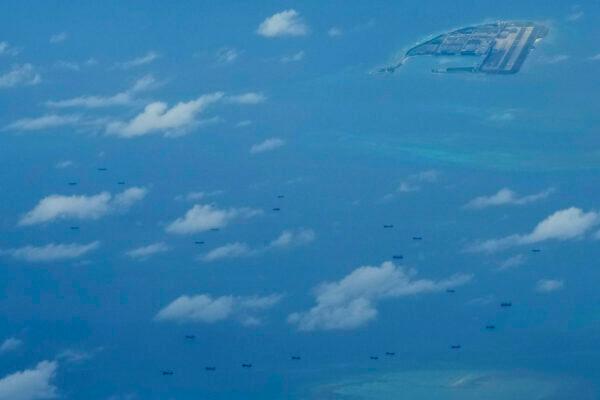China has fully militarized at least three of the islands that the regime built in the disputed South China Sea, Adm. John Aquilino, commander of U.S. Indo-Pacific Command, said on March 20.
China has equipped Mischief Reef, Subi Reef, and Fiery Cross Reef with anti-ship and anti-aircraft missile systems, laser and jamming equipment, and aircraft hangers, Aquilino said. The missile systems could easily target any civilian and military planes flying over the disputed waters, he added.
“So that’s the threat that exists, that’s why it’s so concerning for the militarization of these islands,” Aquilino said. “They threaten all nations who operate in the vicinity and all the international sea and airspace.”
Currently, Aquilino said his mission is to “prevent war” through deterrence and promote peace and stability, in efforts that include working with U.S. allies and partners.
“Should deterrence fail, my second mission is to be prepared to fight and win,” Aquilino said.
China’s ruling communist regime is currently locking horns with Brunei, Malaysia, the Philippines, Vietnam, and Taiwan in a territorial dispute over reefs, islands, and atolls in the South China Sea.

Aquilino applauded the Philippines for taking the territorial dispute to international arbitration, saying it was a good template to resolve the dispute peacefully.
The interview with the AP was conducted while Aquilino was aboard a U.S. Navy reconnaissance aircraft P-8A Poseidon, while the plane flew near China-held outposts in the Spratly archipelago.
During the flight, the U.S. Navy plane was repeatedly warned by Chinese callers, telling the plane to leave what they said was China’s territory.
“China has sovereignty over the Spratly islands, as well as surrounding maritime areas. Stay away immediately to avoid misjudgment,” one of the Chinese radio messages said in a veiled threat.
In response, a U.S. pilot on the Navy plane radioed back to the Chinese, saying, “I am a sovereign immune United States naval aircraft conducting lawful military activities beyond the national airspace of any coastal state.”
“Exercising these rights is guaranteed by international law and I am operating with due regard to the rights and duties of all states.”






Friends Read Free